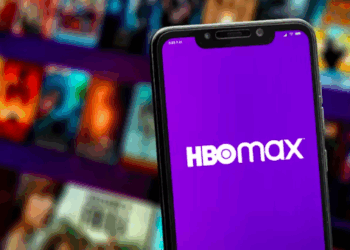“The Digital Revolution is over. We won” – Randall Rothenberg, CEO, IAB, 2013
I have read, with some interest, a recent piece published in The Media Online by Justin McCarthy from TBWA and subsequent comments and commentary by respected journalists and industry commentators. In short, McCarthy argues that digital advocates exaggerate the importance and size of digital advertising. In fact, he suggests that traditional media like TV are also growing, off much more impressive base numbers, and that digital is merely an “evolution” within media.
The rest – social media, Google, everything else – he suggests, is more fantasy than reality. Moreover, digital people are using questionable numbers and spurious claims to prop up their own egos and their medium.
Let me start by saying that part of what McCarthy is addressing is perfectly valid. Digital advertising is, indeed, a minefield of numbers and technical claims that are hard to verify and harder to explain. In fact, this is such a serious problem globally that the IAB in the US has dedicated a considerable part of its current activities to “cleaning up the supply chain”. By this they mean clearing out fake traffic and discreditable data from internet advertising numbers, so that advertisers can trust the claims made by agencies and publishers about the efficacy of digital.
He is also right that the launch of the IAB in South Africa is intended, and will, drive the credibility and value of digital in the local market.
So much for where McCarthy and I are likely to agree. And even in this respect, the above indictment levelled at the digital industry is one that is already being acknowledged and addressed by the industry itself.
The rest of the piece – and subsequent discussion – proceeds from the frankly bizarre assertion that digital is over-hyped (“poppycock”, he says). As a corollary, McCarthy seems to want to fight in the corner of old media, such as TV, citing tired and debatable measurement numbers in the process and in their defence.
To do a point-by-point analysis and rebuttal of that piece – as my colleague Alan Morrissey from Effective Measure tried to do in the comments – is to add fuel to the wrong fire. To me this debate can be settled much more simply than that.
How to define a revolution
For starters, PricewaterhouseCoopers – which conducts digital adspend studies in 14 markets in collaboration with the IAB – sets the current global digital adspend at US$100Bn. McCarthy argues that TV is up a few percent in the past year.
Digital is up from 0 in the past 20 years.
If 0 to $US100bn doesn’t impress someone as ‘revolutionary’ then I suppose it’s up to them to find a more appropriate use of the word. This figure absolutely includes Google and Facebook advertising, display advertising and dozens of other compelling new forms of marketing that this digital revolution has spawned.
Again, we are all free to redefine terms to support our own case, but if you ask the millions of businesses on the planet who now use search marketing to drive customer acquisition whether they regard that as advertising I think you will be forced to admit they do.
A word then on measurement
We know for a fact that Nielsen’s Adex understates digital adspend in South Africa. We know this not because we are “digital divas” but because as the IAB we know how many of our publishers submit data and what they submit. And I can tell as a simple fact we are under-reporting even classical banner adspend.
Another glaring logical fallacy is the ‘appeal to authority’ that Nielsen is “the world’s most credible measurement company”. This also doubles as irony in a country where our national media measurement body (Saarf) has been all but torn apart by a scandal due to errors made by Nielsen in TV measurement over a number of years.
So much for infallibility.
We do not currently know what the local digital adspend is. PwC has just been commissioned by the IAB South Africa to replicate the studies done so successfully in other markets and hopefully we will have a real piece of research to rely on in these kinds of debates in the future.
But we don’t require this information to characterise McCarthy’s piece, and his supporter’s comments, as an irrelevant contribution to the debate about media and advertising. The macro trends speak for themselves – the decline of print, the pervasiveness of cellphones, the volume of tablets sold, the size of businesses like Google and Apple. And, more significantly, the success enjoyed over the past 12-18 months of local publishers and digital agencies.
More important than any of that is the business results being achieved by banks, insurers, automotive companies, online retailers and travel businesses online. These, after all, are the clients who buy the advertising to sell their products.
Year on year, globally and increasingly locally, online advertising is working. The ROI metrics of online direct response advertising speak for themselves. Countless case studies are now also emerging that suggest the brand-building benefits of display advertising have, if anything, been grossly underestimated. This due to an overemphasis on metrics like click-through rates at the expense of more appropriate measures such as brand recall.
The growth and importance of digital cannot possibly be overstated. Its pace can be debated. Its reach – particularly in South Africa – can be questioned, for now. But to be a proponent of digital being a niche medium that can, by implication, be safely downplayed in favour of another big TVC is to do a disservice to any marketer or business owner who might be paying attention.
Extrapolating from the present into the future on the basis of outdated measurement technologies is wrongheaded and demonstrably flawed. It is precisely this sort of Luddite thinking that blinded newspaper executives a decade ago to the inconvenient truth that digital media was about to render their traditional business models defunct. One hopes that the likes of TBWA will avoid a similar fate, but McCarthy’s dogmatic pronouncements are a cause for concern. Should anyone in marketing or advertising buy his argument the results will be detrimental not only to the online media industry, but to the progress of marketing and commerce in our country as a whole.
We trust that most South African marketers are far more astute and progressive than that.
Jarred Cinman is chair of IAB South Africa
** Thank you to Timothy Spira (eNCA), Sarah Rice (IAB), Geoff Cohen (24.com), Helene Lindsay (New Media Publishing), Sarah Blake (IAB) and the rest of the IAB membership who contributed to this piece **














